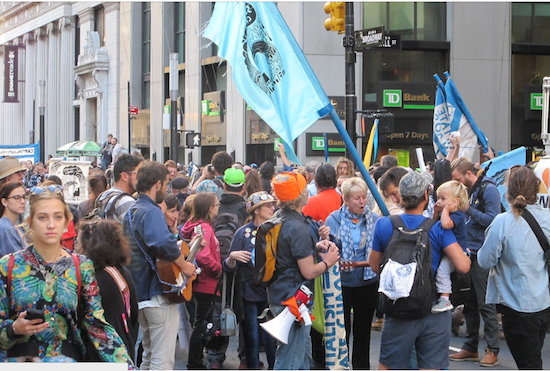Unlike Climate March, ‘Flood Wall Street’ culls division
Confrontational Tactics, Less Coherent Message Turn Off Would-Be Allies

The ‘Flood Wall Street’ protest in Lower Manhattan Monday afternoon
If the People’s Climate March worked wonders to rally disparate groups around the climate change issue, Flood Wall Street may have done just as much to set things back.
“Half the people here don’t even know why they’re here,” complained Danny Curry, a plumber who works in the city and usually takes the X1 or X3 bus back home to Staten Island. Curry learned about the protest in tandem with the realization that his commute home would be upended. “There are so many causes, and many of them don’t make sense.”
As Curry spoke, a protester walked up to a line of police with a vaguely worded sign referencing Nazis. Other banners and placards included denunciations such as “stop capitalism.”
